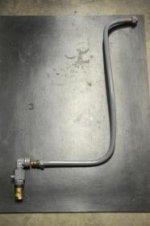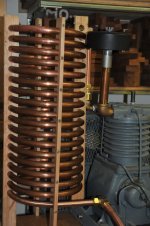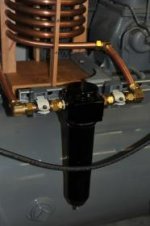gzig5
Hot Rolled
- Joined
- May 10, 2005
- Location
- Milwaukee, WI
Might be a silly question, but here goes. I'm going to put an after-cooler on my 5hp, 60gal, two-stage compressor to eliminate as much water in the air as I can. This will consist of a Derale 15300 trans cooler with 1/2" tubes and -8AN fittings along with a water separator/filter. These get plumbed inline between the pump output and the tank. This compressor uses a 3/4"OD copper tube between the pump and tank. This seems larger than what I've seen on other compressors. I can run 3/4" pipe/tube for the connections, but I'm concerned that the 1/2 tube on the cooler will be a restriction. But at the same time, I know that a 1/2 tube will flow a large amount of air. I've seen videos of other people doing similar and using 1/2" tube, sometimes very long runs acting as the cooler, with no apparent problems. Am I overthinking it, as I usually do?








